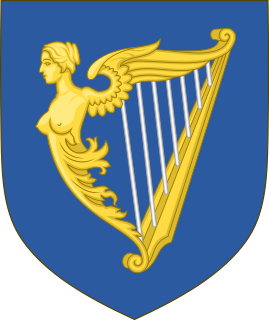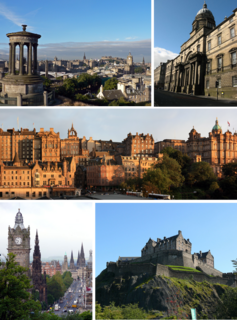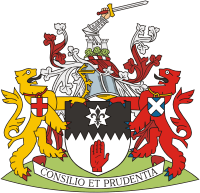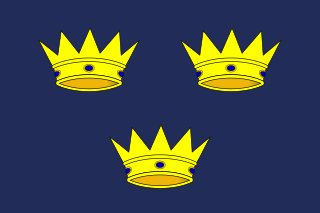
Marquess of Waterford is a title in the Peerage of Ireland and the premier marquessate in that peerage. It was created in 1789 for George Beresford, 2nd Earl of Tyrone. It is presently held by Henry Nicholas de la Poer Beresford, 9th Marquess of Waterford.

Earl Belmore is a title in the Peerage of Ireland that was created in 1797 for Armar Lowry-Corry, 1st Viscount Belmore, who had previously represented County Tyrone in the Irish House of Commons. He had already been created Baron Belmore, of Castle Coole in County Fermanagh, in 1781 and Viscount Belmore in 1789, also in the Peerage of Ireland. Born Armar Lowry, he was the son of Galbraith Lowry, Member of the Irish House of Commons for County Tyrone, and his wife Sarah, daughter of Colonel John Corry. In 1774, he assumed by Royal licence the additional surname of Corry. He was succeeded by his eldest son, the second Earl. He represented County Tyrone in both the Irish and British House of Commons, sat in the House of Lords as an Irish Representative Peer from 1819 to 1841, and served as Governor of Jamaica from 1828 to 1832.

Earl of Antrim is a title that has been created twice, both times in the Peerage of Ireland and both times for members of the MacDonnell family, originally of Scottish origins. This family descends from Sorley Boy MacDonnell, who established the family in County Antrim. His fourth son Randal MacDonnell was created Viscount Dunluce, in the County of Antrim, in 1618, and Earl of Antrim in 1620. Both titles were in the Peerage of Ireland. His eldest son, the second Earl, fought as a Royalist in the Civil War and was created Marquess of Antrim in the Peerage of Ireland in 1645. He was childless and on his death in 1682 the marquessate became extinct.
The Stronge family are Northern Irish landowners of Tynan Abbey, County Armagh, the family also had the residence of Lizard Manor, Aghadowey, County Londonderry.
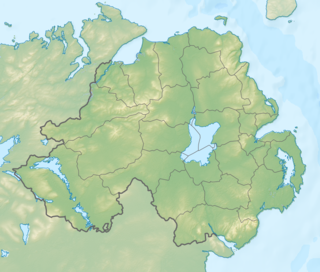
The Battle of the Diamond was a planned confrontation between the Catholic Defenders and the Protestant Peep o' Day Boys that took place on 21 September 1795 near Loughgall, County Armagh, Ireland. The Peep o' Day Boys were the victors, killing some 30 Defenders, with no casualties in return. It led to the foundation of the Orange Order and the onset of "the Armagh outrages".
Sir John Blackwood, 2nd Baronet was an Irish politician and baronet.
Armar Lowry-Corry, 1st Earl Belmore was an Irish nobleman and politician.
Somerset Lowry-Corry, 2nd Earl Belmore, styled The Honourable from 1781 to 1797 and then known as Viscount Corry to 1802, was an Irish nobleman and politician.

George de la Poer Beresford, 1st Marquess of Waterford, KP, PC (Ire) was an Irish politician, known as George Beresford, 2nd Earl of Tyrone from 1763 to 1789.
The High Sheriff of Monaghan was the British monarch's representative in County Monaghan, a territory known as his bailiwick. Selected from three nominated people, he held his office over the duration of a year. He had judicial, ceremonial and administrative functions and executed High Court Writs.
Sir Matthew Deane, 3rd Baronet was an Irish baronet and politician.
Sir William Verner, 2nd Baronet, was a British soldier and Conservative Party politician.
Sir Paul Davys was an Irish politician and civil servant, who held office as Clerk to the Privy Council of Ireland and later as Secretary of State (Ireland). He was a man who had considerable influence in public affairs, and who enjoyed the close friendship of James Butler, 1st Duke of Ormonde. His surviving sons, William and John, both attained high office. He was the grandfather of Paul Davys, 1st Viscount Mount Cashell.
Sir William Edward Hercules Verner, 3rd Baronet was a British baronet. He studied at Eton. From his father, he inherited Churchill estates in Ireland and a home at Eaton Square in London. He died at the age of 30 of cirrhosis of the liver without issue, although he had a step-son he cared for.
Sir Edward Wingfield Verner, 4th Baronet was a Conservative Party politician in Ireland who sat in the House of Commons of the United Kingdom from 1863 to 1880.
Sir Thomas Burdett, 1st Baronet was an Irish politician and baronet.
William Caulfeild, 2nd Viscount Charlemont was an Irish soldier and peer.
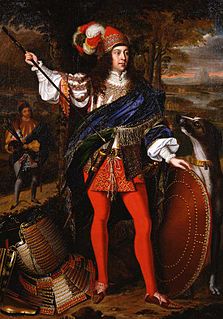
Sir Neil O'Neill, 2nd Baronet of Shane's Castle, Killyleagh, County Antrim, was an Irish army officer.
